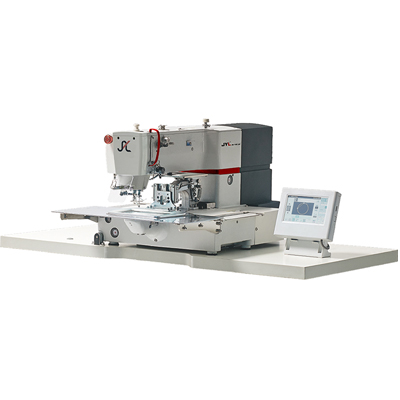A Computerized Pattern Machine is an essential tool in modern manufacturing, known for its efficiency and precision. To maximize its performance and extend its lifespan, proper maintenance and operation are crucial. This article provides practical tips and daily maintenance guidelines to help businesses optimize their equipment and reduce operational costs.

1. Proper Installation and Operation
Installation Environment
Stability: Install the machine on a stable and sturdy surface to minimize vibrations that may affect precision.
Temperature and Humidity: Ensure the working environment meets the temperature and humidity requirements specified by the manufacturer. This prevents component damage and corrosion.
Operating Guidelines
Trained Operators: Ensure that only trained personnel operate the machine to minimize errors and potential damage.
Avoid Overloading: Use the machine within its designed capacity to prevent wear and tear from excessive workloads.
2. Daily Maintenance Guidelines
Cleaning
Surface Cleaning: Wipe the machine's surface daily with a soft cloth to remove dust and debris.
Key Component Cleaning: Regularly clean critical parts like the needle plate, bobbin case, and guide rails to avoid material buildup.
Lubrication
Applying Lubricants: Follow the user manual to lubricate moving parts regularly, ensuring smooth operation.
Avoid Overuse: Use only the recommended amount of lubricant to prevent excess oil from contaminating other components or materials.
Electrical System Checks
3. Regular Inspections and Preventive Maintenance
Inspection Schedule
Conduct weekly routine inspections to document the machine’s condition and identify early signs of wear.
Perform a detailed monthly check on critical components like needles, pressure feet, drive belts, and sensors.
Preventive Maintenance
Replace worn parts like needles and guide rails based on usage frequency and manufacturer recommendations to avoid unexpected breakdowns.
Software Updates: Keep the machine's software updated to improve functionality and address potential vulnerabilities.
4. Troubleshooting and Precautions
Common Issues and Solutions
Uneven Stitching: Ensure the needle plate and bobbin case are clean and verify the thread compatibility.
Unusual Noise: Lubricate moving parts or check for loose screws.
Frequent Needle Breakage: Confirm the needle is correctly installed and that the material is suitable for the machine.
General Precautions
Avoid dismantling the machine without professional guidance. Contact the manufacturer or a certified technician for complex issues.
Do not place heavy or unnecessary objects on the machine, as this may affect heat dissipation or cause deformation.
5. Additional Tips for Prolonging Lifespan
Workload Management
Use Genuine Parts
Employee Training
By following proper operation practices and implementing regular maintenance routines, businesses can significantly extend the lifespan of their Computerized Pattern Machines. This not only reduces repair costs but also ensures consistent production efficiency. From installation and daily care to periodic inspections, each step is vital in achieving optimal performance and long-term value. Investing in maintenance ultimately maximizes the return on investment in these advanced machines.




